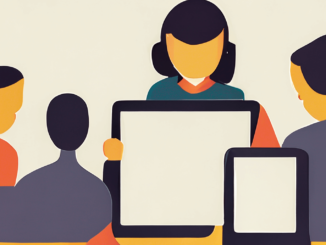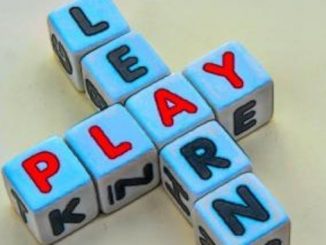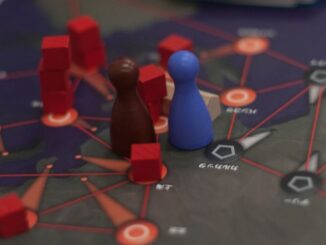
Should you work with another game designer to co-design your game or create your game completely by yourself? That all depends. There are definitely pros and cons to each approach.
For example, if you’re working by yourself you’ll have complete control over your project and are able to work on this on your own time.
However, when you co-design, you’ll have someone else to bounce ideas off, you’ll be accountable to each other, and you will be able to incorporate ideas that you may never have thought of on your own. You’ll also be able to split the workload and keep pushing each other to make the game better (and potentially develop it much faster).
When it comes to co-designing a game, one plus one can be greater than two.
But it’s not just a matter of whether or not you should co-design, but more importantly, who you would best work with, should you choose this path.
Games design with Friends
While it may seem like a great idea and a lot of fun to work on a game with a friend, there are some potential pitfalls you’ll need to be aware of. Just like that time in university or college when you decided to room with your best friend, you may find out that spending too much time together, especially working on a project together, can strain a friendship.
It may also be a little bit of trial and error. You may try working with someone and it just doesn’t click. But don’t let that dissuade you from trying to co-design with others. It’s all a matter of finding the right partner or partners to work with. And it doesn’t have to be the same person you work with on all your games. Different designers may be better suited to working with you on different styles of games.
You can also choose to work on some projects on your own while co-designing other games. It’s all about figuring out what system works best for you.

Also, while you can design a game with a team of three or more, this is fairly rare, so I will focus this article on working with one other co-designer. However, much of this would still apply to a larger team.
I’ve come up with four key elements of successfully co-designing a game that will help you in deciding who to partner with.
1. Make Sure You’re on the Same Page

You’ll want to be sure that the game you’re working on excites both you and your co-designer. This has to be something you’re both passionate about and will see through to the end.
As well, you’ll want to ensure you’re working towards a common goal. If one of you is serious about the game and the other just wants to make it for fun, there could be a conflict. In addition, perhaps your partner wants to crowdfund this through Kickstarter, whereas you have no interest in running a business and would prefer to pitch this to established publishers.
A misalignment between co-designers on the goals and vision for your project could make working with a partner a serious challenge. So, make sure you both want the same thing out of this partnership.
2. Blend Your Skills for Successful Co-design

One of the great things about working with a co-designer is being able to utilize both of your skill sets to the max. If you both have the same background and talents, there could be a lot of other gaps that are difficult to fill.
Say, like me, you’re great at coming up with game ideas and quickly getting a rough prototype (link to prototyping and playtesting event recordings) to the table to test and you’re really good with numbers, but you don’t have the same interest or skill when it comes to graphic design and making your prototype look good. In this case, it may be to your benefit to work with someone who enjoys the aspect of crafting a game and making it look visually appealing, but who can also offer a lot of insights into making the game design better.
This is something that has worked exceptionally well for me, particularly with one co-designer I work with frequently, Sylvain Plante. He loves the crafting aspect of making a game the most but is also an exceptionally talented game designer. However, he has no interest in pitching games, which I have no problem with, and I’m a numbers guy so I can also figure out economies and balance fairly quickly, so I often take the lead on this part of the design. I have to say that this partnership has improved the quality of my games as well as the table presence immensely, which really helps in getting players interested in playtesting your game (as well as getting publishers to look at your game).
There are a lot of other aspects to designing and publishing your game where you might have strengths and weaknesses. Finding a partner that is strong in areas you are weak, and vice versa can pay tremendous dividends. Ultimately though, you should both also be very interested in designing games, particularly ones you are both interested in.
3. You Need a Similar Work Ethic if you are to Co-design

Do you remember when you were in school and had to do a project? Were you ever randomly assigned to a group where you ended up taking on more than your fair share of the workload? Maybe one member contributed little or nothing, and you had to pick up the slack (no pun intended).
This is something you want to avoid repeating when it comes to designing a game (and fortunately, you’ll be able to pick your partner rather than having them assigned to you!). When you’re working with another designer, you’ll want to be clear about roles and responsibilities, along with ensuring that all parties pull their weight and work toward all agreed-upon timelines.
If the game is your idea, you’re really gung-ho about it, and you have a lot of time to put into developing the game into something special, whereas your partner only contributes a little here and there, you may end up feeling some resentment.
You’ll definitely start to re-think whether you want to co-design a game again if you end up doing 90% of the work on a project and only getting 50% of the credit. That’s not to say that you have to become a taskmaster and count the exact number of hours you each contribute. That would be way too hard to do and would take a lot of the fun out of designing a game together. You want to both feel that you’ve made significant contributions and feel good about what you’ve accomplished together. So, it’s crucial to work with someone who’s just as eager as you and is willing to put in the effort.
One suggestion would be to work on two projects together, one that was your idea, and one that was your partner’s idea. It may not always be an equal 50-50 split of work, but between the two projects, if you both feel you are contributing reasonably equally, this can be a good method to pursue.
4. Communication and Expectations

As with every relationship, communication is vital.
You want to be clear about exactly what your expectations are of each other at all stages of the project. This will help you to avoid duplicating work or branching off in completely different directions.
When you outline your roles and responsibilities, it’s easier to determine who will do what. This of course will likely change in some ways throughout the development of the game as different needs are determined, but so long as you’re communicating and discussing who’s working on what at different points, you will run into far fewer problems.
Keep each other informed of where you’re at with the different aspects of your game, any issues with timelines, and any challenges you are facing. You’re there to help each other out, so get together in person, over the phone, or using whatever communication tool works for you, and deal with any problems that may arise.
If you decide to self-publish, you’ll want to be clear about what role each of you is playing, and what other support you will need to outsource for the campaign. You can divide up times of day to reply to Kickstarter comments, decide who’s in charge of updating your campaign page, and all the other small tasks that go along with crowdfunding a game.
If you’re going to pitch your game to publishers, decide which one of you will be the voice for your game and the main contact person, which is usually easier when working with a publisher. Just make sure to keep each other in the loop about recent developments and discuss any major decisions that need to be decided upon.
It’s Your Decision
Of course, it’s your decision whether you want to create a game on your own or with a co-designer. And this may change between one project and the next. Some of your games may be straightforward for you to complete on your own, whereas others may truly benefit from working with someone else and having a second person to bounce ideas off of.
It doesn’t always have to be the same co-designer either. Try not to let one bad experience determine all your future choices when it comes to working with others on a game. Sometimes it’s just a matter of finding the right partner to work with.
There are so many great benefits to working with the right co-designer that it’s at least worthy of your consideration.
Have you had success working with other designers? What has made this a good or bad experience for you?
- 4 Ways Co-design will Make or Break your Game - 7th March 2022





Be the first to comment